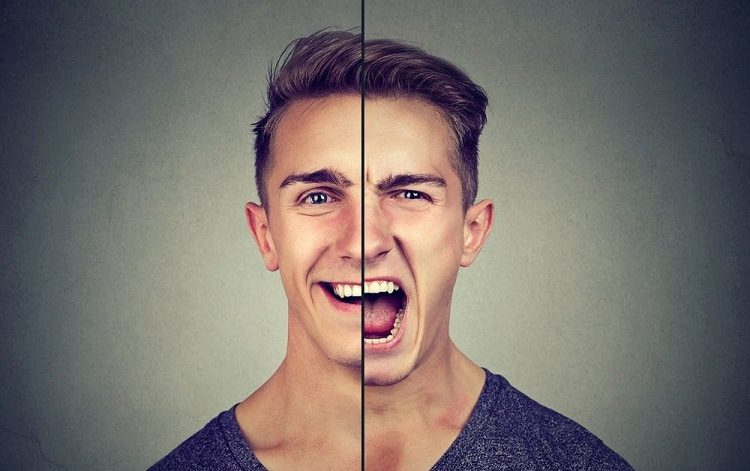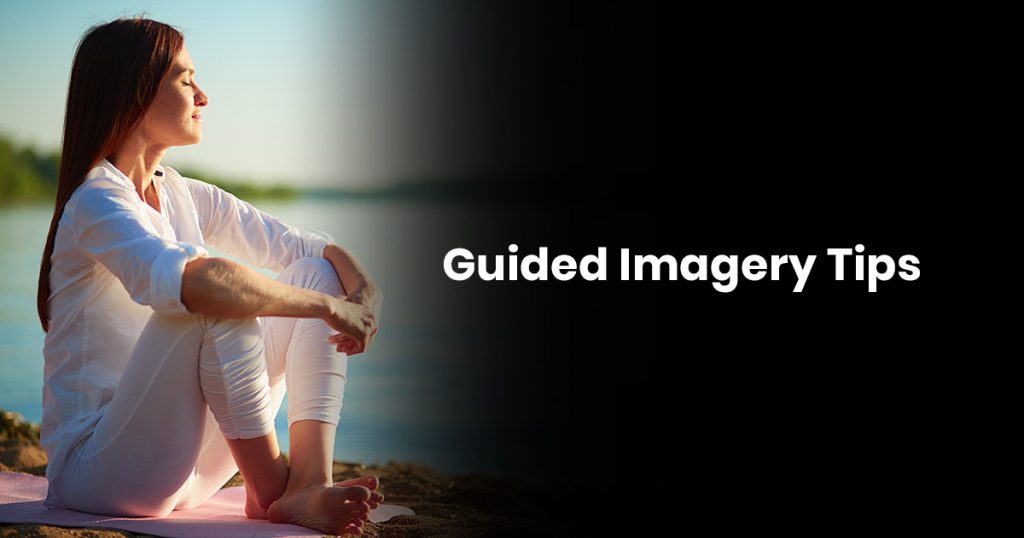Guided imagery has often been referred to as visualization or mental imagery. However, this term is slightly misleading because guided imagery involves all of the senses.
It is not just the visual sense; however, the experience is throughout the body and not just mentally. This is a good thing since 55% of the population does not contain strong visuals.
Guided imagery would be more accurately referred to as self-hypnosis since it and encourages images that are received in an altered-like state. Ideally, this form of meditation can be used interchangeably with the term guided meditation.
So the question remains, what exactly is guided imagery?
It is ultimately self-hypnosis. Guided meditation has the ability to deliver multiple layers of encoded messages through simple images, sensations, and symbols that are received in a trance-like state.
Another benefit of guided imagery is that it mobilizes the unconscious processes to help you with your conscious goals.
The following guide will take a look at some of the benefits of guided imagery and exactly how it works.
What exactly is guided imagery?
Guided imagery is a focused practice that ultimately involves each of the five senses to introduce positive healing messages throughout the body and mind.
It is often interchanged with visualization, guided meditation, and self-hypnosis; however, it has its own unique set of techniques that come with a wealth of benefits too.

Ultimately it reduces fear and anxiety, lowers the frequency of headaches, and decreases psychological distress in patients suffering from cancer. Furthermore, it can be introduced to your home through your mindfulness routine at any point in time.
Guided imagery makes use of all your senses, such as your sense of sorrow, vision, smell, and touch as well. Ultimately your senses are used to build images in the mind that causes your body to believe that the events are actually real.
This doesn’t necessarily mean that during your real-time session that your body will physically be smelling, tasting, and hearing these objects; however, it does mean that your mind will visualize and acknowledge each sense.
This is very different compared to a traditional guided meditation that is more focused on your mental state without the addition of the whole body’s senses.
Guided imagery, on the other hand, stimulates changes in the heart rate, despite respiratory patterns, blood pressure, and so on because of the deep, physical body and mind connection.
The best way to make an analogy is to compare it to having a food craving from memory. When you have a food craving from memory, your saliva glands actually become active.
So your mind and body start to make a connection over an image that is formed in your head that touches both of your senses. So what if this could be used for managing stress and pain?
So we’ve mentioned that guided imagery is different from visualization. However, how exactly does it differ? Well, visualization allows the individual to focus purely on visuals whereas guided imagery constructs an immersed state of mind throughout the entire body by making use of all five senses.
So one might ask exactly how this differs from hypnosis?
Well, the reality is that more often than not hypnosis requires a participant and a hypnotist. The hypnotist makes suggestions to the participant that helps them to enter a subconscious state of mind. Guided imagery, on the other hand, makes you the sole power of your own imagination.
And therein lies the difference between guided imagery and hypnosis.
Benefits of the guided imagery
Guided imagery can provide insight, wisdom, and relaxation.
Not only is it a free stress-relieving method or therapy, but with practice, it can be done just about anywhere. It also helps with psychological stress and physical tension both at the same time.
Ultimately, it distracts you from stressing and gets you into a more positive frame of mind. Therefore it can be extremely helpful in disrupting patterns of rumination and helps to build resources in your life that enhances your resilience to stress by engaging in an upward spiral of positivity.

Aside from this, it also has a positive effect on heart rate, breathing, oxygen, blood pressure, brain waves, hormonal imbalances, and temperature. It relieves the symptoms caused by stress such as chest pain or angina, high blood glucose, high blood pressure, digestive and breathing problems as well as headaches.
In a nutshell, it builds the immune system and enhances your ability to heal.
It also increases your recovery time in the hospital and enhances your sleep. Pain is dramatically decreased as well as our need or dependency on medication when using imagery. Ultimately, it increases your confidence and reduces depression, as well.
Guided imagery is also safe, and there are no known symptoms associated with its use. It is probably one of the most effective therapies out there if the person teaching it has training techniques.
Tips for guided imagery
Although there is no single way to use visual imagery in order to release stress symptoms in the body and mind, the following steps should ideally be followed:

- You should start by finding a calm space and making yourself comfy
- Thereafter take deep and slow breaths to center your attention and calm yourself down
- Close your eyes
- Picture yourself in a beautiful location, where everything is ideally as it should be. Some people choose to visualize a mountain, forest, the beach, or being in their favorite room sitting in their favorite chair.
- Then try to picture and imagine yourself becoming calm and relaxed. Try to imagine yourself being happy, smiling, and having a good time
- Focus on different senses and attributes that are present in your scene in order to make it more vivid. So for example, if your picturing the beach, spend some time trying to imagine the warm sun on your skin, seaweed and salt spray, the smell of the ocean, the sound of the wind, seagulls, and waves as well. So the more you invoke the senses, the more real the experience will become.
- Stay within your scene while picturing various sensory aspects for between 5 to 10 minutes until you reach a point of calm and relaxation.
- While you are in that state of mind, assure yourself that you can return to this space whenever you need to.
- You can finish off by opening your eyes and rejoining the world.
Example conditions aggravated by mental imagery
Mental imagery contributes to or activates certain conditions such as Posttraumatic Stress Disorder, Depression, Social anxiety, and bipolar disorder. There is a connection between mental imagery and these specific conditions.
PTSD
PTSD is usually the symptoms that follow one’s experience of witnessing a traumatic event such as serious injury, a significant threat to oneself, or death. Ultimately this tends to leave disturbing images in your mind, and the patients experience some flashbacks.

These unwelcome images provoke memories of the original incident, and therefore insights heightened emotions and feelings of the experience of danger to safety in the present or here and now.
Social anxiety
People who suffer from social anxiety have a normal tendency to see situations that will cause public humiliation. This could be a situation such as speaking in front of an audience, being interviewed, interacting with people that they are not familiar with, etc.

Just like PTSD, mental imagery is experienced with social anxiety. These images violently play in the mind and focus on more than just a single intimidating situation that insights negative feelings of shame and awkwardness.
Depression
Depression is described as the capacity to evoke positive imagery either voluntarily or involuntarily. This usually takes it to visit for sustaining positive moods and feelings of optimism.

Depression is used to associate negative rumination of verbal thought patterns and is usually thought to be manifested as an unspoken speech.
Therefore people who are suffering from this condition have difficulty in invoking perspective and positive imagery of the future.
Bipolar disorder
Bipolar disorder is usually characterized by manic episodes over periods of depression. But an anxiety disorder is experienced at some stage by 90% of patients.

In addition to this, there is significant evidence of suicidal tendencies amongst those with this condition. Prospective and positive mental imagery is indicative of hyperactivity or mania, and it is one of the stages of bipolar disorder.
By using positive imagery, individuals are assisted in reducing their tendency to focus on images that are indicative of painful, distressing, or detrimental to nature and condition. Instead, positive images are encouraged and emphasized, and so is a positive, proactive activity.
Therefore symptoms that are damaging are reduced, and pain is lessened while coping skills are increased.
Related Questions
How does mental imagery work?
It uses all five senses to engage the mind and body in bringing positive images and thoughts to the entire being.
Is it like hypnosis?
Some people believe it is, however, this is not accurate because hypnosis requires a hypnotist and participant whereas guided imagery makes you the sole power over your images.
What are the benefits of guided imagery?
It reduces stress, enhances mood and sleep, strengthens the immune system and enhances your ability to heal.

